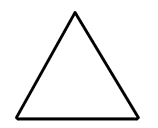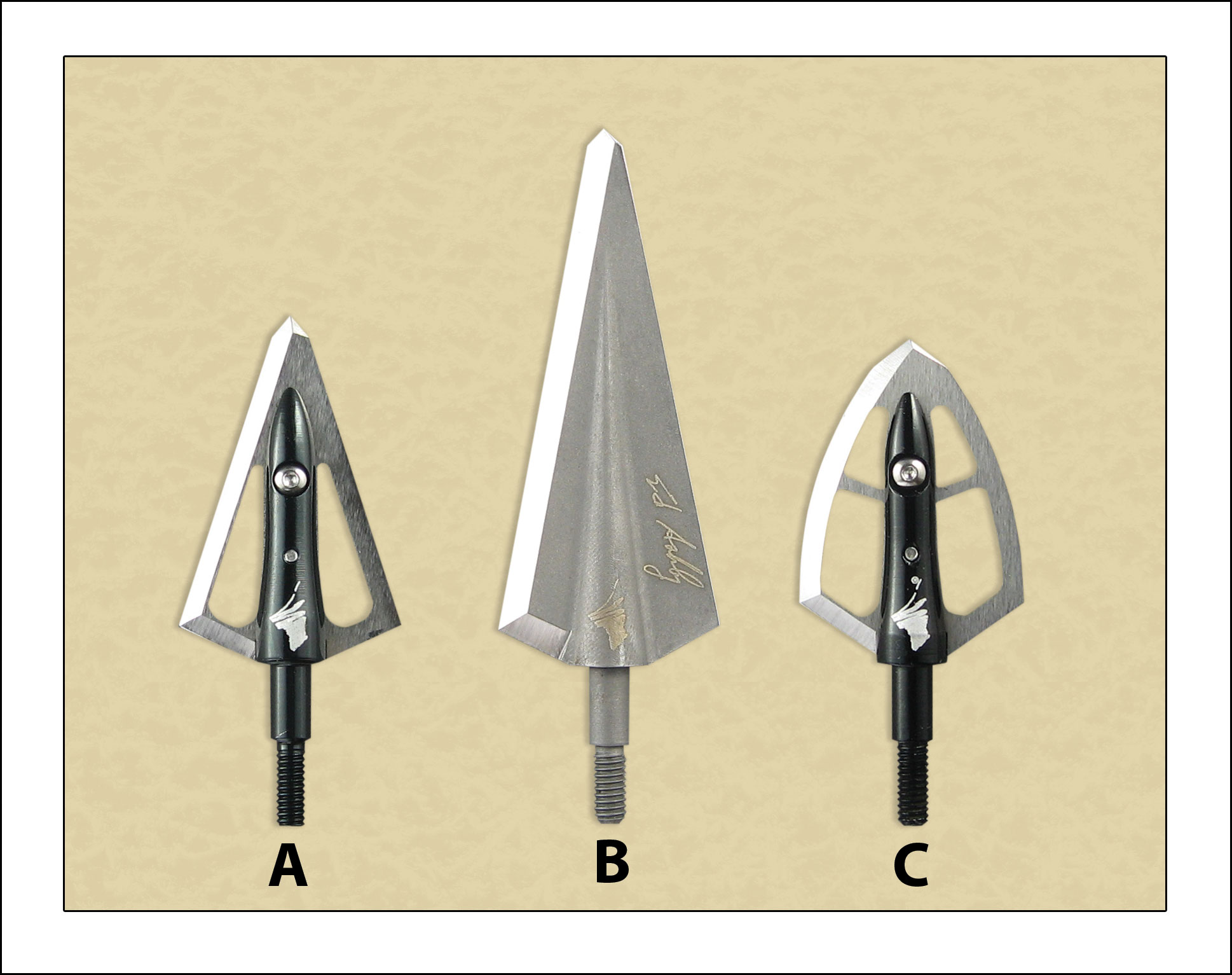Rethinking Arrow and Broadhead Performance
A NEW Series of Bowhunting Articles by the Ashby Bowhunting Foundation
Article 5: Factor 4 – Broadhead Mechanical Advantage
Would you like to hunt with arrows and broadheads that give you pass-throughs on big game shot after shot? Would you like to have complete confidence in your arrows and broadheads to give you lethal penetration and reliable kills even if you hit bone? Of course, you would! Every serious bowhunter wants that kind of performance from their setup. Join us for Dr. Ed Ashby’s Top 12 Penetration Enhancement Factors.
After extensive testing, Dr. Ed Ashby identified twelve specific arrow penetration enhancement factors. He then ranked them in order of importance so that bowhunters would have a straightforward guide as to what they should build into their arrow and broadhead setups—and in what order—so they could create the most reliable and lethal setups possible.
To optimize your arrow and broadhead builds, it is recommended that you incorporate as many of the 12 Penetration Enhancement Factors as possible. The fourth factor, Broadhead Mechanical Advantage (MA), will be discussed today.
“Broadhead MA has a more pronounced influence on the outcome-penetration of a perfectly flying, structurally secure arrow than any other factor except FOC.” Dr. Ed Ashby

“Mechanical advantage refers to how steep the angle is on the blades of the broadhead. Just like an inclined ramp, the longer the length of the ramp in relation to its rise, the less energy it takes to get to the top of the incline. Were this not true it’s a sure bet that wheelchair ramps for the handicapped would be short and steep!
The mechanical advantage of a broadhead also changes if it has more blades. If two broadheads have the same length and width, but one has more blades, the one with more blades will have a poorer mechanical advantage and will require more energy to penetrate. The degree of penetration gain varies, depending on which broadheads are compared. Broadhead MA has a more pronounced influence on the outcome-penetration of a perfectly flying, structurally secure arrow than any other factor except FOC.
Higher MA increases the ‘work’ your arrow can do with whatever ‘useful force’ is available. Its advantage is applicable to all arrows, of all designs. However, the more efficient the rest of your arrow is the more penetration-gain higher broadhead MA yields (See 2007 Update, part 3 and 2008 Update, part 3, How Arrow Efficiency Compounds the Penetration Gain).” Quoted from Dr. Ed Ashby’s 2019 Terminal Arrow Performance Update.
Broadhead mechanical advantage—commonly referred to simply as M.A.—is a ratio of the force that performs the useful work to the force that is applied. When looking at a broadhead, this essentially boils down to how steep the blade angle is, and thus how effectively the arrows force can be utilized to do the work of penetrating. To better visualize this, lets first break down the terms that will be used moving forward.
Terms to know
- Length: The measured distance of the cutting edge from tip to tail.
- Height: The measured distance from the centerline to the furthest part of the cutting edge.
- For 2 and 4 blade broadheads this can be simplified as half of the maximum cutting width
- Mechanical Advantage: Length / Height \
- This applies per blade for a broadhead so this ratio will then be divided by the number of blades to determine the overall broadhead mechanical advantage
- Length / Height / Number of Blades
- This applies per blade for a broadhead so this ratio will then be divided by the number of blades to determine the overall broadhead mechanical advantage
- Applied Force: The amount of force the arrow carries at a specific point in time.
- Remember that this changes throughout the flight path. The force at launch will be degraded by drag throughout flight and further degraded as resistance is encountered during penetration
- Work: The required force over a set distance.
- For our purposes, we will be looking at the “ramp” or mechanical advantage of our broadhead as the distance and the applied force of the arrow at impact.
- Work = Force x Distance
Examples of Mechanical Advantage
[box] Now that we understand the elements involved, let’s look at an example to better understand how mechanical advantage can make a significant impact. [/box]
Imagine that you are trying to load a 100-pound box into your truck bed that is 3 feet high. From a simple viewpoint there is 300 pound-foot of work that needs to be done, but the amount of applied force depends on how we raise the box.
- Option 1 – Lift the box straight up and set it in the bed (essentially a 0 degree ramp with the length equaling the height)
- Length = 3
- Height = 3
- Mechanical Advantage = 3/3 = 1
- Applied Force = 100lbs/1 Mechanical Advantage = 100lbs
- Work = 100lb x 3 feet = 300lb-ft
- Option 2 – Use a 6 foot long ramp (30 degrees) to slide the box up to the height of the bed
- Length = 6
- Height = 3
- Mechanical Advantage = 6/3 = 2
- Applied Force = 100lbs/2 Mechanical Advantage = 50lbs
- Work = 50lbs x 6 feet = 300lb-ft
- Option 3 – Use a 12 foot ramp (14.5 degree) to slide the box up to the height of the bed
- Length = 12
- Height = 3
- Mechanical Advantage = 4
- Applied Force = 100lbs/4 = 25lbs
- Work = 25lbs x 12 feet = 300lb-ft
 In option 1 the box has to move the shortest distance, but it will require the most applied force as there is no mechanical advantage so the full weight must be lifted (technically more, but let’s keep this simple). Most people would struggle with an endeavor like this and would need to recruit a buddy or two in order to be successful. As the ramp length increases with options 2 and 3, the force you need to apply decreases due to the mechanical advantage, but the distance you must move the box increases so even though it’s easier the same amount of work is being accomplished.
In option 1 the box has to move the shortest distance, but it will require the most applied force as there is no mechanical advantage so the full weight must be lifted (technically more, but let’s keep this simple). Most people would struggle with an endeavor like this and would need to recruit a buddy or two in order to be successful. As the ramp length increases with options 2 and 3, the force you need to apply decreases due to the mechanical advantage, but the distance you must move the box increases so even though it’s easier the same amount of work is being accomplished.
Another example can be found at your local gym. If you have ever worked out on a treadmill, you know that the steeper the angle of your running platform is, the more work you have to do to keep running.
The lower the angle, the easier it is to run. That’s how mechanical advantage works.
The lower the angle of attack, the easier it is for the broadhead to penetrate whatever it encounters. Yet, you don’t want to ever go so far with the mechanical advantage that you compromise the structural integrity of the broadhead.
Maximizing Work
Now, when thinking about penetration, we do not have a predetermined amount of work that must be accomplished. This can change depending on the shot angle and exactly what is encountered. A true broadside shot is considerably less work than a hard quartering away; it could easily be double. Add in smaller bone like ribs compared to tissue only and it goes up even more. Add in something like a scapula or a leg bone and it will dramatically jump again. Knowing this, the goal is to maximize the amount of work that can be accomplished and that’s where mechanical advantage comes into play for us.
Our bows are essentially a simple machine, and however you have it set up (draw length/poundage), we can essentially consider its force as fixed. It will be decreasing throughout flight, but unless we change bows or change how it is setup, we cannot drastically increase our initial level of force. What we can do is increase the mechanical advantage of our arrow system by utilizing a more efficient broadhead. Let’s look at another example, but this time instead of the mechanical advantage decreasing how much force we need to apply, we will allow it to increase how much work can potentially be accomplished with a fixed force.
Example with a fixed force
Available Force = 10 pounds
- Broadhead 1 (Typical 1.25 inch wide)

- 4 blade
- Cutting Length = 1.5 inches
- Height = 0.625 inches
- Mechanical Advantage = 1.5/0.625 => 2.4/4 blades = 0.6
- Potential Work = 10 x 0.6 = 6
- Broadhead 2 (Typical 2 inch mechanical)

- 2 blade
- Cutting Length = 1.125 inches
- Height = 1 inch
- Mechanical Advantage = 1.125/1 => 1.125/2 blades = 0.56
- Potential Work = 10 x 0.56 = 5.6
- Broadhead 3 (Wide Cut Fixed)

- 2 blade
- Cutting Length = 2 inches
- Height = 1 inch
- Mechanical Advantage = 2/1 => 2/2 blades = 1
- Potential Work = 10 x 1 = 10
- Broadhead 4 (Typical Fixed 2 blade)

- 2 blade
- Cutting Length = 2.5 inches
- Height = 0.625 inches
- Mechanical Advantage = 2.5/0.625 => 4/2 blades = 2
As you can see, the overall mechanical advantage of the chosen broadhead can have a significant impact on the potential work that your arrow system can accomplish. With no other changes to the arrow, simply changing from an inefficient design with a mechanical advantage of around 0.5 to a traditional 2 blade with a mechanical advantage of around 2 will effectively QUADRUPLE the overall potential work that can be accomplished.

While this applies across the board to all archers, it is especially important when dealing with low energy setups or especially large animals. For those short draw/low poundage shooters we know, it can make a huge impact when a focus is placed on maximizing the potential work. Even for those of us with longer draws and higher poundage, this is an area that can really solidify our “Plan B” for when things don’t go exactly to plan.
Keep Other Factors in Mind
As we have noted before, the one thing to keep in mind is that we do not want to negatively impact the other factors we have discussed. In this case, the primary concern would be structural integrity. The longer the broadhead blade gets, the more support it will need to prevent bending and/or breaking. This support can come in different forms, but the length of the ferrule (overlapping and supporting the blade) along with the thickness of the blades are two key areas to pay attention to. It does no good to have an extremely efficient head mechanical advantage that isn’t going to hold up.
It’s simple and straightforward. When you’re looking at potential broadheads to optimize your penetration potential, avoid broadheads with low mechanical advantage figures. Consider only broadheads with high mechanical advantage that have excellent structural integrity, are razor sharp right out of the package, hold an edge well, and sport a non-skip tip. The higher your mechanical advantage, the more work your broadhead can do with the given amount of energy available to it. Find yourself a broadhead like that, and you will be set. It will work on any big game animal you will ever hunt, and it will give you the best performance possible.
Get to know the authors!
[author] [author_image timthumb=’on’]https://www.biggame.org/wp-content/uploads/2021/06/dr-ed-ashby-bio-pic-002.jpg[/author_image] [author_info]Dr. Ed Ashby
Dr. Ed Ashby, a legend in the archery hunting community, dedicated more than 27 years to the study of arrow performance and broadhead lethality. His involvement in the historic Natal Study helped validate just how lethal archery equipment could be on all sized big game animals and was the main reason that bowhunting was ever legalized in South Africa. [/author_info] [/author]
[author] [author_image timthumb=’on’]https://www.biggame.org/wp-content/uploads/2021/06/rob-hummel-bio-pic-002.jpg[/author_image] [author_info] Rob Hummel
With a background in fabrication and engineering, the current standard being pushed by the industry didn’t feel right when Rob first entered the world of archery. Fortunately, after being directed to some of the reports from Dr. Ed Ashby’s field research it all began to align with the mechanics he already understood. Over the last decade, Rob has continued pushing to bring consistent lethality to the forefront of the archery industry. [/author_info] [/author]
[author] [author_image timthumb=’on’]https://www.biggame.org/wp-content/uploads/2021/06/todd-michael-smith-bio-pic-002.jpg[/author_image] [author_info] Todd Smith
For over 40-years, his passion for bowhunting and thirst for knowledge and understanding have driven Todd to learn everything he could about arrows, broadheads, and arrow lethality. Todd is an author, public speaker, and has helped to educate tens of thousands of bowhunters on how to set themselves up for bowhunting successes by using proven – lethal – arrow and broadhead set-ups.[/author_info] [/author]

[box] What’s the Ashby Bowhunting Foundation all about?
The Ashby Bowhunting Foundation is dedicated to continuing Dr. Ed Ashby’s research and to ensuring that bowhunters everywhere will have free access to information that will help them build extremely lethal and reliable arrow and broadhead setups for all species of big game. The foundation was started in 2017 to continue the work of Dr. Ed Ashby that has benefited bowhunters worldwide for decades. The Foundation’s goal is to provide information to achieve the highest possible success rate and reduce the wound/non-recovery rate of big game to the lowest level possible. Through a program of continuing research, the Foundation seeks to find the most lethal arrow setups, taking into account all possible hits under real hunting conditions, controlled testing and using freshly culled animals. The results of this testing is always made available to the global bowhunting community free of cost, utilizing multi-media outlets for information and test results. The Ashby Bowhunting Foundation is excited for this opportunity to partner with DSC and to share these articles with all DSC members so they can make informed decisions of whether to change to arrow and broadhead combinations that will increase their odds of bowhunting success under all situations and conditions. For more information please visit: https://www.biggame.org/ashby-bowhunting-foundation [/box]



